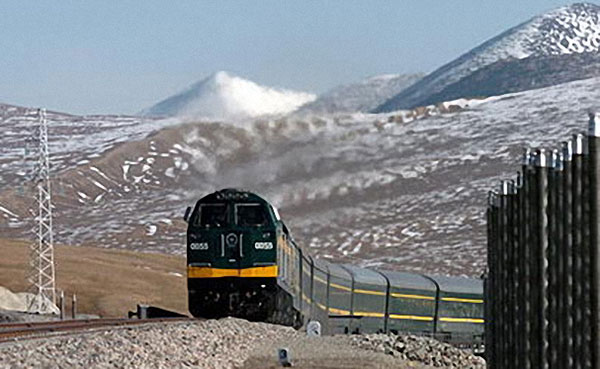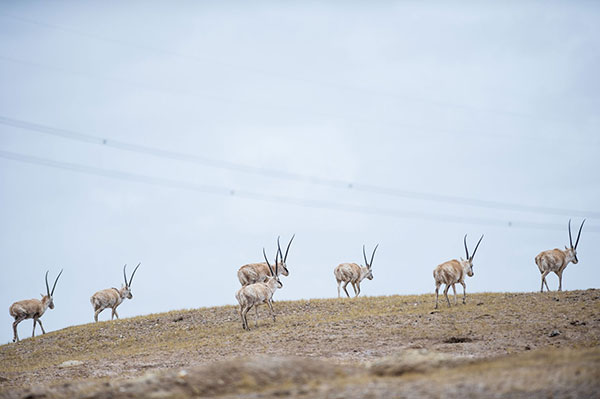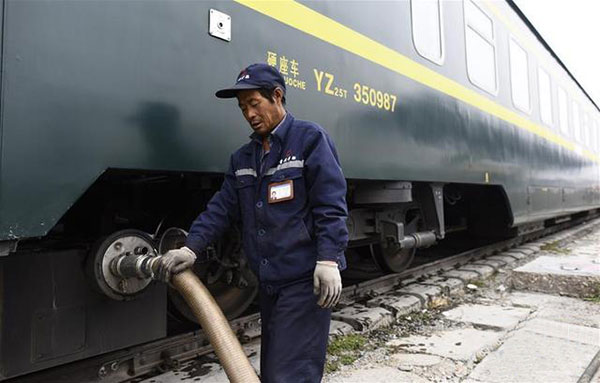How major challenges were overcome
The world's highest line, and the longest to be built on a single plateau, the Qinghai-Tibet Railway celebrated a decade of safe operations on Friday, putting to rest concerns expressed at the beginning about permafrost, wildlife preservation and sewage treatment on trains.
CHALLENGE 1: Frost
 |
About 550 kilometers of the 1,956-km railway's track is laid on permafrost, frozen soil, sediment or rock. Permafrost is defined as ground that stays frozen for at least two years. When the railway was proposed, concerns were raised that the heating systems that keep the track clear of ice and snot might melt the permafrost and affect the integrity of the track.
Solution-Dong Tianchun, an engineer at Qinghai-Tibet Railway Co who specializes in permafrost technology, said engineers solved the problem by elevating the track with pile-driven foundations sunk deep into the ground in permafrost areas. In other places, a total of 10,829 heating pipes are buried underground.
CHALLENGE 2: Wildlife

The Qinghai-Tibet Plateau, often referred to as the roof of the world, sustains species of Tibetan antelope, snow leopards and wild donkeys. For thousands of years, these species have lived in the least-accessible areas and are sensitive to disturbance. Some people worried the animals' seasonal migration patterns would be influenced by the railway. Tibetan antelope calves are normally born in early June. It now appears that the environmental impact on plateau wildlife has seen better-than-expected results.
Solution-Yang Haijiang, a railway planner, said 33 animal passages were built along the rail section from Golmud to Lhasa-58 kilometers. "In 2006, only 56.6 percent of the animals used the passages," Yang said. "But monitoring shows that 100 percent of the wildlife uses the passages in the area of their migratory route since 2011. They cross the passages swiftly and in small groups. They would only come in large herds if they were nervous. So this also shows that they have gotten used to the noise and vibration of trains."
CHALLENGE 3: WASTE

On many rail lines, attendants lock the restroom when the train approaches a station to avoid waste leakage and pollution. However, passengers can use restrooms anytime on the Qinghai-Tibet Railway. All waste on board is offloaded and taken away by trucks at certain stations, including Golmud and Lhasa.
Solution-Wang Qiang, an engineer at China CNR Corp, said trains on Qinghai-Tibet line are forbidden to discharge waste along the route. Trains stop at three stations, Xining, Golmud and Lhasa, and discharge collected sewage through the use of a vacuum-equipped truck.
